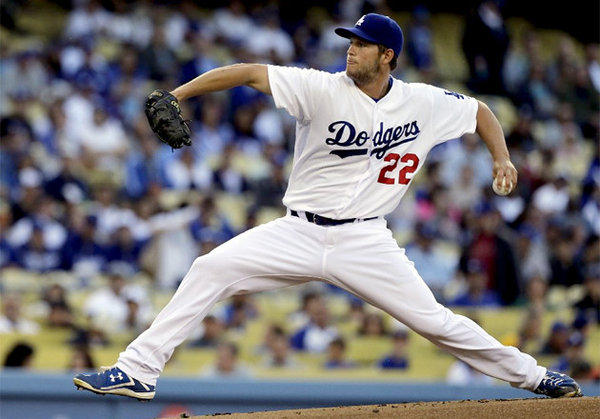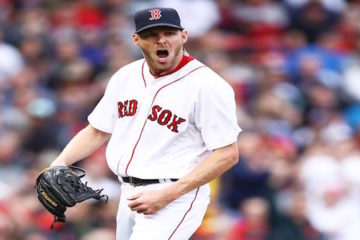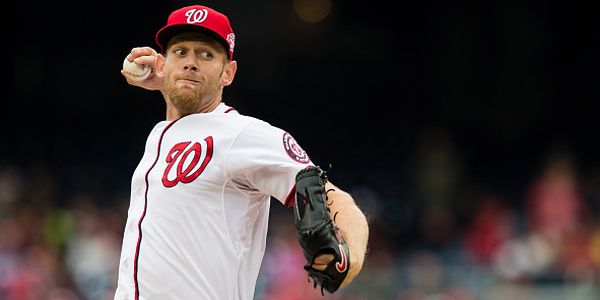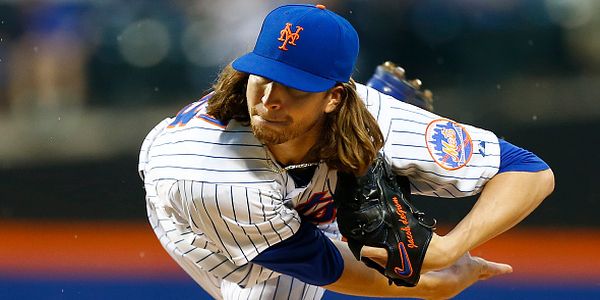2014 Fantasy Baseball: The Starting Pitcher Market — AL Central
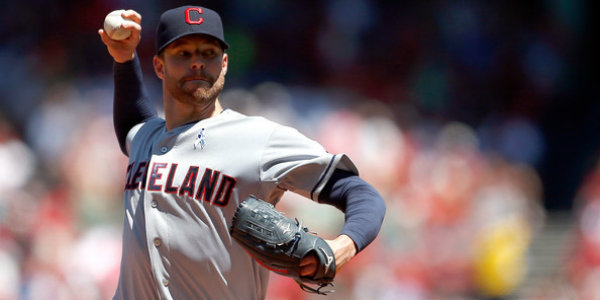

A funny thing happened on the way to looking at the AL Central pitching market. When you have hard and fast rules at who belongs in what tier, you sometimes find some tiers underrepresented. As it turned out, only one pitcher qualified as a tier one starter in the AL Central. In many ways, this might be a predictor of what kind of success (or lack thereof) we can expect from the division in the postseason.
All that being said, we first must go backwards before we can move forward with the starting pitchers in this division. We are splitting the pitchers into three tiers. The first tier is for starting pitchers with a SIERA below 3.00. The second tier is for guys with SIERAs between three and four. The last tier is for pitchers with a SIERA above four. We are limiting the pool to pitchers with at least 60 innings pitched (as of June 13th). That will limit the pool to around 15 pitchers from each division.
The idea is that when we look at SIERA, we are looking at where the pitchers likely will end up at season’s end. Of course, some pitchers will outperform and underperform those projections, but we can safely assume most pitchers will fall somewhere in that neighborhood. Therefore, we can look to see which pitchers you should add and which pitchers you should drop before it is too late. Naturally, we will have some other numbers in conjunction with SIERA, but most of them are there to explain why a pitcher’s SIERA is where it is.
|
INN |
BABIP |
LOB% |
SO/9 |
BB/9 |
ERA |
SIERA |
|
|
91.1 |
.336 |
71.6 |
10.25 |
2.17 |
3.35 |
2.82 |
It’s lonely at the top and I’d have to say I am pleasantly surprised with these numbers. I always had Kluber pegged as a tier two kind of pitcher. For most playoff contending teams, that’s either a number two or three starter. Kluber has the look of a staff ace for a fringe playoff team. The key to looking at this data is to separate the numbers above into two categories. The first two major categories (BABIP and LOB%) tend to be pretty stable throughout baseball. The league average is .300 and 70 percent accordingly and there appears to be little rhyme or reason for where a pitcher’s numbers there might be. We consider it a more luck-driven category. Kluber’s average on balls in play should drop, so his ERA should also drop.
The strikeout and walks data are directly related to talent level of the pitcher. They are things the pitcher can directly control, so they more accurately predict a pitcher’s success. Kluber leads the division in strikeout rate, so it stands to reason he should be the division’s best pitcher so far. His walk rate isn’t the lowest, but it is very good for a strikeout pitcher. The impending result is that he stands alone in the first tier.
|
INN |
BABIP |
LOB% |
SO/9 |
BB/9 |
ERA |
SIERA |
|
|
77.2 |
.318 |
66.1 |
7.30 |
2.78 |
3.59 |
3.76 |
|
|
80.0 |
.322 |
66.4 |
8.33 |
4.39 |
4.61 |
3.79 |
|
|
94.1 |
.311 |
80.9 |
10.11 |
2.67 |
3.05 |
3.10 |
|
|
91.2 |
.303 |
72.0 |
7.66 |
2.06 |
3.44 |
3.49 |
|
|
70.1 |
.293 |
77.9 |
8.06 |
2.69 |
3.20 |
3.45 |
|
|
82.1 |
.310 |
75.4 |
7.87 |
0.87 |
3.17 |
3.35 |
Max Scherzer is a riverboat gambler if there ever was one. He turned down north of 140 million dollars to pitch one more season and test the open market. The problem is that the tide appears to be turning on run production in baseball. The Tiger hurler did insure himself against injury, but no one can insure themselves against a changing market. James Shields will be going into the same market.
The only real surprise on this list is Phil Hughes, but considering the fact that he is already posting very good numbers across the board, few leagues have yet to discover him. That leaves Justin Masterson as a potential buy low candidate. His peripheral numbers are better than his ERA right now, but that is likely because of some shoddy defense that might not improve. Still, I might gamble that he will discover some more control and therefore see some improvement overall.
|
INN |
BABIP |
LOB% |
SO/9 |
BB/9 |
ERA |
SIERA |
|
|
82.0 |
.270 |
74.0 |
6.37 |
3.51 |
4.17 |
4.60 |
|
|
91.2 |
.315 |
65.3 |
6.58 |
3.83 |
4.61 |
4.64 |
|
|
92.2 |
.279 |
80.7 |
6.51 |
2.23 |
3.30 |
4.08 |
|
|
79.0 |
.340 |
69.1 |
6.38 |
2.51 |
5.70 |
4.21 |
|
|
72.1 |
.336 |
63.1 |
4.73 |
1.87 |
5.60 |
4.63 |
|
|
69.0 |
.271 |
70.7 |
4.57 |
3.00 |
3.91 |
4.55 |
|
|
75.2 |
.295 |
71.9 |
5.83 |
2.02 |
4.04 |
4.08 |
|
|
85.2 |
.260 |
77.8 |
4.31 |
2.10 |
4.10 |
4.77 |
Data analysis is often made more complicated than it needs to be. Think of it as a basic science experiment. You have a control group (SIERA) and you have several experimental groups. What you are looking for is commonalities. When you find it then you find a reference point for how we can better predict performance. In this case, strikeout rate is clearly the best predictor for success or failure in the long-term.
That is why I love hearing about how pitchers should pitch to contact. I certainly understand where that advice comes from and while the numbers above would clearly indicate that that advice is wrong, you can’t pitch for the strikeout all the time either. Clearly, you have to miss some bats or your success will rely almost exclusively on batted ball luck. Jeremy Guthrie and Jason Vargas have been very lucky so far. Ricky Nolasco and Kevin Correia not so much.
The biggest name is obviously Justin Verlander. I can think of no better example as to why long-term contracts for pitchers are a bad idea. He has been fairly healthy (although you have to wonder if he is healthy now), but his effectiveness has gone in the toilet of late. Simply put, pitchers seem to lose their edge sooner than position players. The Tigers are on the hook until 2019 when it comes to Verlander. Unfortunately, people like Shields and Scherzer will likely pay the price for Verlander’s struggles when teams are reluctant to give them those same long-term contracts.


